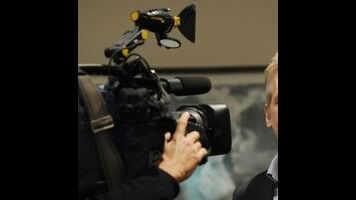For decades, Americans have enjoyed cracking smugly self-satisfied jokes about British teeth, those crooked, tea-stained emblems of everything that is supposedly wrong with socialized medicine. But if the latest Frontline report, “Dollars And Dentists,” is to be believed, Americans no longer have much reason to feel superior. Even for those of us with cushy compensation, dental insurance is like the snow leopard of benefits: elusive, precious, and incredibly rare.
Many of us just fork over a hundred bucks or so to get our teeth cleaned once a year, but for millions of Americans unable to pay out of pocket for routine dental care, there are only two viable options: Medicaid or credit card debt. As “Dollars And Dentists” reveals, this reality has spurred the growth of corporate dental chains that cater to—or, in some cases, exploit—low-income individuals, many of whom have catastrophic dental problems as the result of years of neglect. Somewhere, Kate Middleton is laughing at us through her blindingly white, perfectly straight teeth.
In its first half-hour, “Dollars And Dentists” takes a look at how the dental care crisis has affected children. For instance, we meet a Florida grandmother unable to find a dentist willing to accept her granddaughter’s Medicaid. Like thousands of other children in the state, the 5-year-old now has to go to under general anesthesia in the emergency room in order to receive dental care. The problem, as correspondent Miles O’Brien learns, is that Medicaid is slow to reimburse doctors, and the rates are considerably lower than those provided by other insurance providers. It’s little wonder, then, that only 10 percent of dentists in the state even participate in the program.
An increasing number of corporate dental chains have stepped into this void. “Dollars And Dentists” focuses on Kool Smiles, an outlet that caters to children (in case that irreverent letter “K” wasn’t a dead giveaway) on Medicaid . Backed by a private equity firm, Kool Smiles has been able to turn a healthy profit for its investors. There is considerable evidence that the company pushes crowns on its young patients, because they garner a higher reimbursement rate from Medicaid. Kool Smiles dentists also receive bonuses based on the revenue they bring in, meaning they’re incentivized to sell expensive and unnecessary treatments.
In its second half, “Dollars And Dentists” turns to the subject of adult dental care. O’Brien visits an Indiana outpost of Aspen Dental, a fast-growing corporate dental chain with some 350 offices around the country. As the company’s CEO explains, Aspen caters to patients between the ages of 45 and 65 who are “struggling to make ends meet.” We meet one such patient, a truck driver with no dental insurance who hasn’t had his teeth checked out in over 10 years. During a visit to Aspen, he learns he needs dentures that will set him back nearly $7,000. Without that kind of cash on hand, he must sign up for a “care card”—a specialized credit card used to finance dental treatment. Big surprise: Here’s where things start to get creepy.
The cards Aspen provides are backed my major corporations who pay the company as soon as they sign up new customers, but who often begin charging interest at rates as high as 29 percent before services have even been rendered. In this way, the dentist’s office has become yet another outlet for predatory lending, like a payday loan center or a rent-to-own furniture store. This is certainly unseemly, but the salient detail left out of “Dollars And Dentists” is just how much these services would cost at an average dental practice. Is our truck driver getting a deal with his $7,000 dentures? And if he is, does this make it acceptable that someone’s loaning him the money at exorbitant rates? Without some cost comparison between Aspen and other dental care providers, I can't begin to answer that question.
There are other glaring questions that “Dollars And Dentists” neglects to address. Just why does dental care cost so much? Why are Americans getting more cavities than ever? Why are the reimbursements provided Medicaid so slow and so paltry? These are huge questions, obviously, and maybe too vast to tackle in an hour-long documentary—but they’re worth acknowledging. While greed is surely a contributing factor, there are other problems driving up cost and driving down efficiency.
Similarly, “Dollars And Dentists” never really explains how Sarrell, a non-profit Medicaid dental chain in Alabama featured in the report, manages to be successful without ripping off its patients. We are told that their focus on preventative care leads to lower long-term costs, but there are no statistics to help illustrate this point. (Where are the pie charts?!) “Dollars And Dentists” implicitly makes that case that Sarrell represents a viable “third way” forward for the dental industry, so it would be helpful if we came away with a better understanding of their model.
While this Frontline doesn’t answer quite enough questions, the one thing it will leave you with is a desire to brush your teeth—like, right away. Can that really be a bad thing?









































